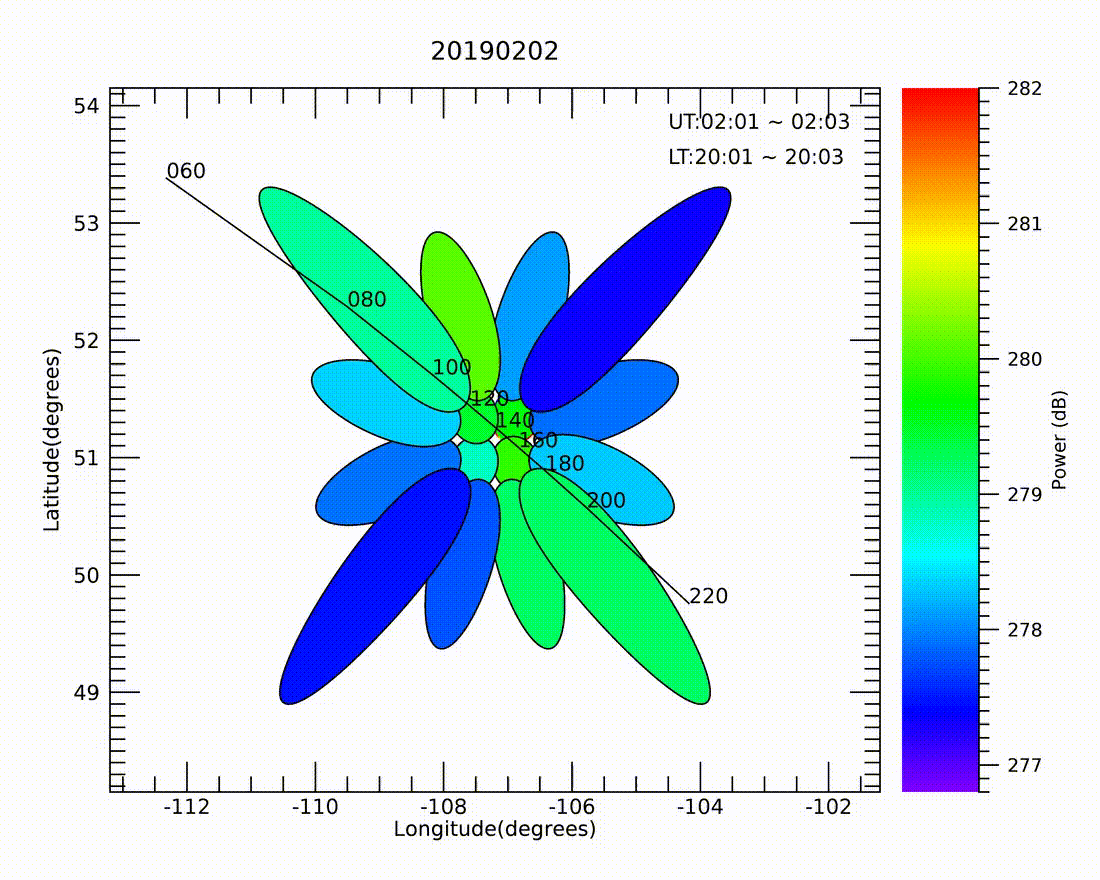Pulsating Aurora
What is pulsating aurora?
The escaping energetic particles from the loss cone “precipitate” into the Earth’s upper atmosphere, interact with atmospheric ions, atoms, and molecules and cause photon emissions, creating what we call the aurora.
Pulsating aurora, a common kind of aurora, turns on and off quasi-periodically. It is a visible manifestation of the time-evolving fluxes of precipitating magnetospheric electrons.
How are the pulsations caused and what determines the shape of pulsating patches?
Numerous studies suggested that the pulsations are caused by the modulation of the rate of pitch angle scattering due to wave-particle interactions near the equator [Coroniti and Kennel, 1970]. Recent observational studies have demonstrated this connection [Nishimura et al., 2010, 2011].
Previous studies suggested that the structure of PPA patches reflects the structure of the cold plasma population near the equator. We have investigated the motion of pulsating aurora patches and our results suggest the motion of pulsating aurora patches is E×B motion and so reflects ionospheric convection.
Remotely sense magnetospheric convection
Using the motion of pulsating aurora patches as a supplement to radar and satellite convection measurements, we found the equatorward moving auroral streamers lead to an enhancement in the azimuthally westward motion of PPA patches and suggest a possible mechanism for the generation of SAPS and suggest that SAPS could be formed by the fast westward flows at subauroral latitudes in different MLT sectors in a statistical sense.



Riometers

The video presents imaging riometer (an array of antennas operating @20~50 MHz) beampatterns in time series showing the rotation of the galactic plane.
More info to be updated.